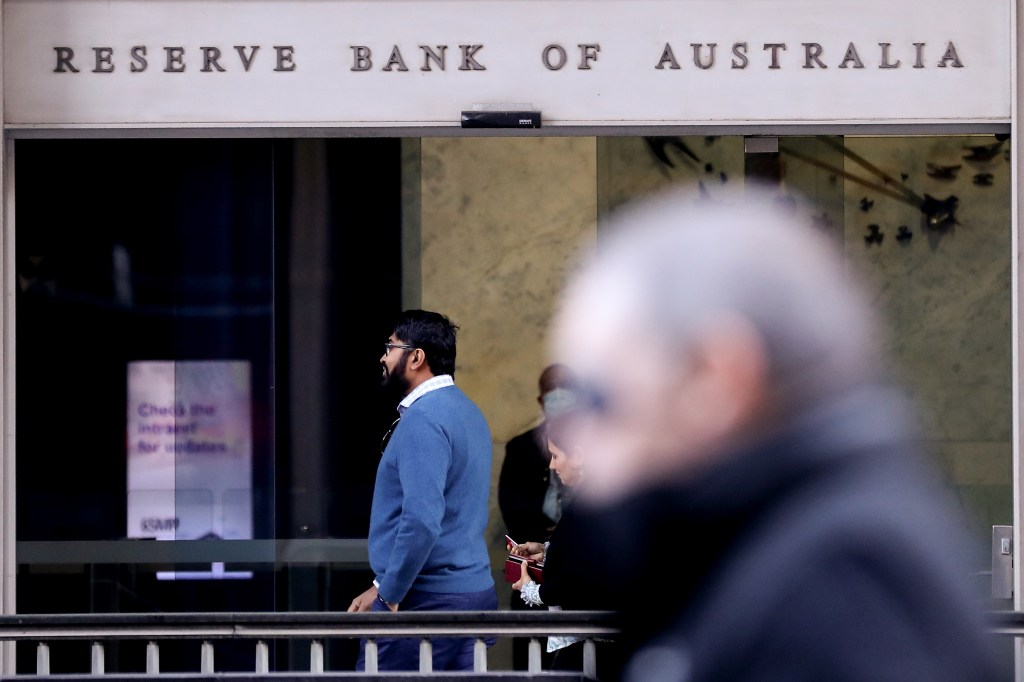The Reserve Bank of Australia has kept rates on hold at 4.35% after softer-than-expected inflation data and a share market bloodbath.

Key Takeaways
- The RBA has kept the official cash rate on hold at 4.35% after softer-than-expected inflation data, and a share market bloodbath.
- The ASX closed own 3.7% on Monday in its worst two-day performance since 2022.
- That’s largely in line with global markets: the Dow Jones Industrial Average’s 2.8% decline set it up for its worst loss since September 2022, the S&P 500 dropped more than 4% drop in its worst day since September 2022 and the Nasdaq Composite took its biggest tumble since March 2020 (down 6.2%).
- The Australian dollar is trading around 65.20c.
- Overseas, the magnificent 7 shed more than $1 trillion as Apple shares opened down 8%, Microsoft 5%, Nvidia 14%, Google parent Alphabet 6%, Amazon 8%, Facebook parent Meta 7% and Tesla 11%.
- Cryptocurrencies bitcoin and ethereum took a tumble on Monday, dropping to near-six-month lows
What we know
The RBA has decided to keep the cash rate target unchanged at 4.35 per cent and the interest rate paid on Exchange Settlement balances unchanged at 4.25 per cent, saying that the economic outlook remains “highly uncertain”.
“The economic outlook is uncertain and recent data have demonstrated that the process of returning inflation to target has been slow and bumpy,” the RBA stated.
It also noted that momentum in economic activity has been weak, as evidenced by slow growth in GDP, a rise in the unemployment rate and reports that many businesses are under pressure.
According to the latest ABS data, retail volumes on a per-capita basis fell for the 8th straight quarter, down 0.9%, with retail spending on a per-person basis down 3% on this time last year. It’s the lowest level since the September 2021 quarter.
What to watch for
Saxo Bank’s head of FX strategy, Charu Chanana says that a potential cut could be on the horizon.
“The Overnight Index Swap (OIS) curve is now factoring in a November rate cut from the RBA, indicating the RBA is unlikely to support the AUD. The AUD is also under pressure due to a shift in global sentiment adversely affecting activity currencies. Additionally, the AUD is at risk due to the weakness in the Chinese economy, and is likely to lose ground against other activity currencies like the NZD, where rate cuts are largely priced in.”
Rethink Investing’s managing director, Scott O’Neill, is also predicting a cut before the end of the year.
“I can almost certainly say there will be no interest rate rise,” he says. “The reasons I think interest rates will drop by end of year is that retail sales have fallen for the last six months straight, they are in negative growth now and we’re going to see inflation rates, fuel and building costs stabilise within the September quarter, which will see a significant change.”
Contra
ASX downturns can be frightening, but it’s worth noting that the benchmark ASX200 is still up 4.7% year-to-date. Across five years, the ASX200 is up 16.2%.
Key Background
Monday’s global stock market rout ravaged the share prices of the mega American technology companies which buoyed the last two years’ boom times, as equities on pace for their sharpest decline since the beginning of the COVID-19 pandemic.
Apple shares opened down 8%, Microsoft 5%, Nvidia 14%, Google parent Alphabet 6%, Amazon 8%, Facebook parent Meta 7% and Tesla 11%.
Look back on the week that was with hand-picked articles from Australia and around the world. Sign up to the Forbes Australia newsletter here or become a member here.


